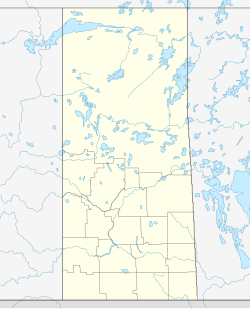History
The village that became Old Wives was formed about 1900, but it was not until 1929 that the community officially got the name. Mail delivery began 1911, when Tom Lundrigan began bringing in the mail from the post office in Mortlach. Eventually, a post office was open January 1, 1912, and remained open until it closed on October 10, 1969. [5] The area was home to several schools, with the first opening in 1916. Bay Island School, officially Bay Island School District #4362, was a one-room school on Highway 363 just east of Old Wives, which served the community from 1919 to 1950. The building still stands today. [6] The first general store in town opened in Mr. Bill Sheldon’s house in 1920. In 1930 a new store was built at the town site and it would operate for nearly 40 years, before closing in 1968. In 1931 the CPR laid tracks from Archive to Shamrock and in 1933 a Saskatchewan Wheat Pool elevator was built alongside the tracks. On July 4, 1930, a De Havilland DH.60 Moth crashed on takeoff from Old Wives. The fate of the pilot is unknown but the aircraft was destroyed by the post-crash fire. [7]
Old Wives has been a ghost town for several decades and while the town briefly prospered, The Great Depression and severe droughts in 1937, 1951 and 1959 began an irreversible downward spiral. Many businesses closed in the 1950s and 60s. The final nail in the coffin for the community came in 1973 when the railroad was abandoned, followed by the Pool elevator being moved to Bateman in 1975. Today, very little remains of Old Wives. [8]
This page is based on this
Wikipedia article Text is available under the
CC BY-SA 4.0 license; additional terms may apply.
Images, videos and audio are available under their respective licenses.


